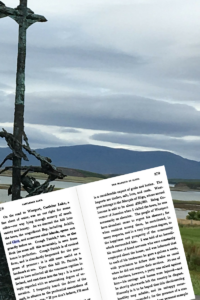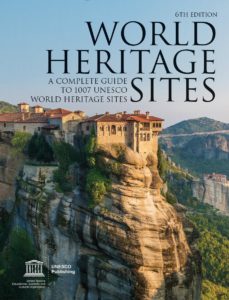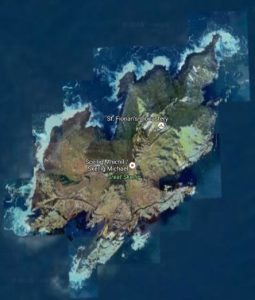
excerpt from “The Miseries And Beauties of Ireland” by Jonathan Binns (London: Longman, Orne, Brown & Co:1837)
Cultural Heritage has been central to the mission of Celtic Crossings for 20 years.
In fact, our slogan ‘Ceol agus Cultúr’ means ‘Music and Culture’.
So when a close friend asked recently, “Hmm, what is cultural heritage and what’s the big deal?” I was caught completely off guard.
How often do we use expressions and assume everyone understand us? I was grateful for her question because it started a great conversation.
From one generation to the next
Cultural heritage is infinitely more than monuments and curated collections. According to UNESCO, cultural heritage is ‘the wealth of knowledge and skills transmitted from one generation to the next’.
That begs the question: with so many choices for travel these days, why is exploring our cultural heritage so attractive?
- Is it our gnawing hunger for continuous learning?
- Perhaps it’s our desire to hold tight to rituals?
- Perhaps we worry that the world is rapidly discarding tradition in preference for speed over depth.
- Perhaps it’s a chance to show our kids where we came from?
- Maybe we want to reassure our parents that we understand why they safeguarded our family traditions?
 So we pause …and ponder… Where did it all really begin? Exploring Cultural Heritage begins to answer that question.
So we pause …and ponder… Where did it all really begin? Exploring Cultural Heritage begins to answer that question.
One of our favorite books is World Heritage Sites: A Complete Guide to 1,007 UNESCO World Heritage Sites.
More than 1,000 places of outstanding universal value scattered around the world are described in compelling detail and gorgeous photography. You’ll find that Ireland has its own UNESCO designated cultural heritage sites.
Sceilg Mhichíl
Just off the western coast of County Kerry rests the now famous Skellig Michael. This extraordinary monastery was home to a small group of ascetic monks from between the 6th and 8th centuries. They withdrew from civilisation to this remote and precipitous rock, in one of the most dramatic examples of extreme Christian monasticism.
 The magnetism of Skellig Michael is testimony to our desire to remain connected to our cultural heritage––even if we have abandoned many of our ancestors’ religious traditions. For 600 years, the island was a center of monastic life for Irish Christian monks and was designated a UNESCO World Heritage Site in 1996.
The magnetism of Skellig Michael is testimony to our desire to remain connected to our cultural heritage––even if we have abandoned many of our ancestors’ religious traditions. For 600 years, the island was a center of monastic life for Irish Christian monks and was designated a UNESCO World Heritage Site in 1996.
Skellig Michael is now home to the world’s second largest colony of gannets. To protect its fragile archaeology and nature, only a precious few tourists are permitted to climb the precipitous stone walkways. In 2014, in a controversial decision opposed by many conservationists, it was twice opened to Lucasfilms for the filming Star Wars Episode VIII, as can be seen in this 2016 February trailer.
When we explore our cultural heritage, what are we searching for?
UNESCO believes an understanding of the intangible cultural heritage of different communities helps with intercultural dialogue. When we discover the hidden secrets of more familiar cultures, we might open our minds to discovering treasures in new and less-familiar cultures.
In a curious irony, the countries we are curious about …are also curious about us! In our ever-shrinking world, food, music, fashion, craft traditions and even language expressions flow freely.
As history unfolded, Irish culture –especially music, poetry and dance–traveled globally with the immigrants who left home in search of better opportunities.
Generations later, their descendants are coming home to discover a vibrant and independent Ireland, culturally rich and economically secure. Modern Ireland is traditional and contemporary at the same time– a tapestry of inherited traditions from the past amid contemporary rural and urban practices.
And now, Ireland offers us a restored cultural inheritance. We can discover links from our past, through the present, and into our future. Ireland is alive and beckoning. For example:
Old style dance schools thrive alongside modern competitive schools. And even more intriguing, American dancers–like the Shannon Dunne Dance School– compete against their Irish counterparts and occasionally WIN !
Once banished to the perimeters of the west, the Irish language is thriving and even attracting online learners from as far away as Japan. Irish radio and television programs are now broadcast live around the world. Traditional music programs are presented live and for podcast–seven days a week.
Festivals honoring master traditional artists are held nearly every weekend of the year. Irish and English language film festivals from Galway to Dublin are earning international reputations.
Literary festivals are attracting best selling authors and inspiring yet another generation of brilliant writers.
So don’t just visit Ireland, experience Ireland.
Explore a cooking course, risk a language class, walk the Burren, visit a smokehouse, learn a tune on the pennywhistle, attend a concert, dine in a castle, visit a famine museum, climb Croagh Patrick, gaze in wonder at the mighty Atlantic ocean. Or using the new buzz word, try a ‘cultural-cognitive touristic trip (CCTT)’ and see what happens!
